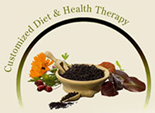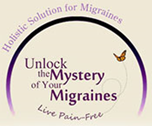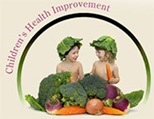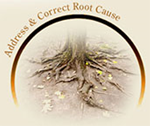





This Common Food Can Give You Life-Threatening Infection
This food is packaged contaminated chicken meat!
Click here for shocking details.
Herein, are simple tips to stay protected.
Prevention is the key!
“An ounce of prevention is worth a pound of cure”- Benjamin Franklin
Reference:
Mercola.com http://bit.ly/2xFLyo
Still Labeled as ‘Raw’
Real raw almonds have tremendous health benefits. They are an excellent source of manganese, copper, and vitamin B2 (all of which are important for the body’s energy production). Almonds are rich in magnesium, phosphorus, zinc and vitamin E, and high in health-promoting monounsaturated fatty acids and many other nutrients.
Raw almonds (with no heat applied) are particularly healthy. According to USDA data, raw almonds have more calcium, iron, potassium, fiber, manganese, and vitamin E.
According to the Almond Board, five methods of “pasteurization” are permitted: oil roasting, dry roasting, blanching, steam processing, and the use of propylene oxide (PPO). A sixth method involved irradiating the almonds, and this was used for a number of years, but now the Almond Board states that “Almond pasteurization does not include irradiation.”
The material safety data sheet for PPO warns:
Causes gastrointestinal irritation with nausea, vomiting and diarrhea. It may cause central nervous system depression, characterized by excitement, followed by headache, dizziness, drowsiness, and nausea. Advanced stages may cause collapse, unconsciousness, coma and possible death due to respiratory failure. Aspiration of material into the lungs may cause chemical pneumonitis, which may be fatal….May cause reproductive and fetal effects. Laboratory experiments have resulted in mutagenic effects. May cause heritable genetic damage.
If you suffer from migraine or not you may experience any of above health symptoms. But, how can you predict that any of these symptoms can be due to eating what it supposed to be a really healthy nutritious food? And, most of the time ended up wandering:
It’s labeled as raw!
I trust and want to support local farmers market…
Where is the truth and what to do?
Learn more @ http://www.anh-usa.org/usda-protect-us-from-raw-almonds/
This Drink is The Main Reasons Why Many People Suffer Health Problems
When suffering from any health problem the first thing you need to do is to look in your ‘box’, your environment, your food and your drink before searching out of the box.
According to Dr. Mercola, “if you are actually drinking soda as a beverage, you are putting your health at risk every time you do so. Drinking just one soda a day can increase your risk of being obese by an amazing 60 percent. And it will increase your risk of diabetes by 85 percent! Soda drinkers even have a higher throat cancer risk.
From a nutritional standpoint, soda has pretty much nothing to offer except bad news– including the ridiculous new “healthy” sodas that have hit the stores recently. Some of the major components of a can of soda include:
Phosphoric Acid: This can interfere with your body’s ability to use calcium, which can lead to osteoporosis or softening of your teeth and bones.
Sugar: It is a proven fact that sugar increases insulin levels, which can lead to high blood pressure, high cholesterol, heart disease, diabetes, weight gain, premature aging and many more negative side effects. Most sodas include over 100 percent of the RDA of sugar, usually in the form of high fructose corn syrup, the number one source of calories in the U.S.
Caffeine: Caffeinated drinks cause jitters, insomnia, high blood pressure, irregular heartbeat, elevated blood cholesterol levels, vitamin and mineral depletion, breast lumps, birth defects, and possibly some forms of cancer.
If you thought diet sodas might be a better option, think again. They are filled with unnatural, artificial chemicals, and are actually even worse the regular soda. There are over 92 different health side effects associated with aspartame (Equal) alone, including brain tumors, birth defects, diabetes, emotional disorders and epilepsy/seizures. On top of all that, they won’t even help you lose weight; in fact, they will double your risk of obesity by stimulating your appetite, increasing your carbohydrate cravings, and activating your body’s fat storage mechanisms. If you have suffered from an adverse reaction to any aspartame product, contact the FDA Consumer Complaint Coordinator in your area.
Nutritionally speaking, soda is one of the main reasons why many people suffer health problems. Aside from the negative effects of the soda itself, drinking a lot of soda is likely to leave you with little appetite for vegetables, protein and other food that your body needs.
If you struggle with an addiction to soda (sugar is actually more addictive than cocaine), I strongly recommend you consider Turbo Tapping, a simple yet highly effective tool that will help you stop this health-harming habit.
And remember that a glass of fresh clean water with a squeeze of lemon or lime makes a great soda alternative any day.
However, soda provides some benefit such as:
- Cleaning your dirty toilet bowl
- Removing rust spots from chrome
- Getting gum out of your hair
- Getting rid of skunk odor
- Cleaning grout
- and more
If soda can really do such harsh things, what does it do to your internal body-YOU?
Adapted From:
http://articles.mercola.com/sites/articles/archive/2008/05/13/how-to-use-soft-drinks-to-kill-mice-and-rats.aspx
Gross Ingredients Might Be Hiding in Your Foods
Human body is designed to have, digest and assimilate real wholesome food which nowadays becomes a bit challenging and difficult to find while industrialized and artificial food is plenty. However, this ‘food’ is full of harmful substances that alter body chemistry leaving it prone to all kind of illnesses or diseases. I came across this interesting article and found it noteworthy to share it with you. So, if you don’t make your meal yourself and from scratch, you can’t know exactly what is hiding in your pre-made food.
“That’s because companies are allowed to use misleading names for food additives – or can omit listing the ingredients altogether, labeling them simply “natural flavors.” Sure, you’ve probably heard about pink slime in burgers, but has anyone mentioned the beetles and beaver anal glands in your smoothie?
Here’s just a few of these unpleasant and, frankly, disgusting secret ingredients you’re probably eating on a regular basis, courtesy of Business Insider:
- Cochineal beetles – These beetles are crushed up to make a red dye that’s used in everything from yogurt, maraschino cherries, commercial jams and jellies, tomato products, and Starbucks Frappuccinos. I don’t know about you, but I don’t completely understand why pink or red fruit isn’t colorful enough on its own.
- L-Cysteine – This is an amino acid used to softened the dough of mass-produced bread. Where does it come from? Human hair. Sometimes duck feathers. About 80% of the L-cysteine on the market comes from human hair (although McDonald’s uses the duck-based variety for its baked goods). Is this technically cannibalism, or just gross?
- Castoreum – Jaime Oliver initially drew attention to the use of this “flavor enhancer” in cheap vanilla and strawberry ice cream. It’s a mixture of the anal secretions and urine of beavers – a natural byproduct of the beaver pelt industry, used as a natural flavoring agent and a fragrance in cosmetics. The good news (as such) is that the FDA recognizes castoreum as “safe.” I guess there’s that.
- Isinglass – That’s a fancy way of saying “dried fish bladder.” It’s used to give beers that distinctive golden glow by binding with the yeast and forming a sediment at the bottom of the cask, which is then (mostly) removed from the final product. There’s no actual need to use it, because the yeast will separate out from the beer on its own within a few days, but mixing in liquefied swim bladder is quicker. Yummy.
- Gelatin – Is it really news that gelatin is made from boiled animal connective tissue? Well, in case you weren’t aware, Jello is definitely, definitely not vegetarian. There are vegetable-based gelatins on the market if you find the idea of boiled bone or skin powder a little too nauseating.
- Lanolin – This is a natural oil found in sheep’s wool and it’s normally used for lotions, shampoos, sunscreen, and other cosmetics to leave your skin and hair silky and smooth. It doesn’t actually hurt the sheep, which is being sheared for the wool anyway, as long as you don’t mind smearing yourself with lamb-grease. But even if you were aware of its use in cosmetics, you probably didn’t know that it’s also used to soften chewing gum.
- Sawdust – That bag of shredded cheese you were going to sprinkle on your pasta? It probably uses “cellulose” to prevent clumping. That’s another way of saying your cheese is coated in a fine layer of powdered wood pulp. It’s also used in meat products, ice cream, and more. At least it’s one way to get your daily intake of fiber.
- Sodium bisulfite – A chemical used as a toilet bowl cleaner, it’s also used to bleach discoloration from potato chips and extend their shelf life. Somehow, this isn’t particularly reassuring.
- And much, much more. There’s so many weird chemical and animal-derived ingredients in processed food that I can’t possibly cover them all in just one blog post. For example, Wendy’s chili gets its distinctive texture from a helping of added sand. And did you know that commercial orange juice isn’t actually flavored with real oranges?
These ingredients would make anyone queasy – but many of them are bad news for anyone trying to follow a vegan or vegetarian diet. And if you suffer from food allergies? Well, if they’re not awful, maybe sometimes you can take a chance on a product listing “natural flavors.” And if they’re deadly, then I guess you’re stuck erring on the side of caution and only eating foods you can prepare yourself.
Actually, even if you don’t have any special dietary needs, that’s probably a good idea. Your standards for the amount of bugs in your meal are probably a lot higher than the FDA’s. Do Care2 readers know of any other disgusting food additives that should be added to the list?”
Adapted From: http://www.care2.com/causes/what-gross-secret-ingredients-are-hiding-in-your-food.html
What is food for one, is to others bitter poison!
“What is food for one, is to others bitter poison”- Lucretius
Allergic reaction to the foods consumed can cause cerebral edema (swelling), headache, mental confusion, and malaise, all of which cause one to feel “dumb” and to
function poorly afterward.
Allergy verses Sensitivity
Food allergy has traditionally been defined as an antigen-antibody response, or a cell –mediated reactions to food.
Food sensitivity, on the other hand, occurs when there is an adverse reaction to food but no antigen-antibody response.
Discouraging breast-feeding and substituting cow’s milk or commercial formulas has helped to foster generation of food-allergic people. Other factors affecting both incidence and severity of food allergies include hormonal imbalance, infections, metabolic diseases, emotional stress, seasons, altitude, and nutritional imbalances. Heredity and race also play a role in food allergy.
Type of Food Allergies and Reactions:
- Occult (hidden): Pathology (damage) is evidence, but without obvious symptoms
- Immediate: Symptoms are obvious within minutes
- Delayed: Symptoms may not appear until the next day or several days later
- Thermal: Symptoms occur after indigestion of a specific food followed by exposure to cold, heat or light.
Difficult diagnose: If you get a headache within 15 mn of a meal, you have no trouble recognizing that a food is triggering the symptoms. However migraine headache afternoon of the day consuming chocolate is much harder to associate with eating chocolate. A person who feels well when she goes to bed, but who wakes up with a migraine headache, usually reacting to food consumed at dinner.
Allergy/addiction Phenomena: Often you may get surprised from knowing that your favorite food that you may think it gives you relief, you are sensitive to such as coffee, sugar, wheat, eggs, corn, or milk. This phenomenal is an allergy/addiction combined with a masked food allergy. You may be unaware of this sensitivity because eating the problem food makes you feel better when the food is eaten regularly masking occurs with chronic, low graded symptoms. Constant postnasal drip, afternoon headaches or sleepy spells, or spaciousness may be the only evidence of the problem. Try to avoid this food or chemical for 4 to 10 days swill unmask the allergy and subsequent re-exposure to the food will elicit acute symptoms.
You may notice sometimes your allergic response are unpredictable. However, why sometimes you can tolerate a food when some other times it provokes symptoms? I always wondered why and I noticed the following: The total toxic load of your body is the determine factor in this case. A toxic load could be allergens, stress factors or infection.
Source:
“Allergy Relief & Prevention” book, a practical encyclopedia by J.Krohn MD, F.Taylor MA, and E.M Larson
Is What You’re Consuming Causes You Migraines?
Are these Health Problems sound familiar to you?
Change in vision
Sleep problems/insomnia
Hallucination
slurred speech
Memory loss
Brain tumors
Poor equilibrium (bodily balance, emotional stability)
Change in heart rate – heart palpitations
Fatigue and weakness
Neurological/behavioral symptoms including headaches, dizziness, and mood changes such as depression and anxiety, seizure and convulsion
Gastrointestinal symptoms including nausea and vomiting, abdominal cramps/pain and diarrhea
Allergic type and/or dermatologic symptoms including hives and rash
Alterations in menstrual patterns
Migraine headaches
Guess what is causing all the above health problems?
It’s any kind or brand of artificial sweeteners.
Here’s a list of some of them: Saccharin (Seet’N Low), aspartame (Equal, NutraSweet, Amino Sweet, Canderel, Natra Tase, Spoonful, Neotame), and sucralose (Splenda).
Check out the following information:
(1) Dangerous Synthetics
Aspartame is known as a cancer-causing compound in rats. It’s composed of aspartic acid, phenylalanine, and methanol. It was approved for food use by the FDA in 1981. The brand names of Aspartame are: NutraSweet, along with Equal, Spoonful, Indulge, Equal-Measure, etc…
Aspartame was discovered by accident in 1965 when a chemist with G.D. Searle Pharmaceutical was testing an anti-ulcer drug. He happened to lick his hand, and the rest is history… Aspartame kills brain neurons. Russell L. Blaylock, professor of neurosurgery at the University of Mississippi’s Medical Center, explains in his book Excito-toxins: The Taste That Kills that though aspartame and glutamate (in the chemically related substance MSG) is a neurotransmitter normally found in the brain and spinal cord.
When aspartame reaches certain levels it causes the death of brain neurons. The risk to infants, children, and pregnant women are higher because the blood/brain barrier, which normally protect the brain, is not fully developed until adulthood.
Dr. Blaylock and numerous other experts believe that long-term exposure to excito-toxins may play a part in diseases such as: Brain lesions and tumors, Early-onset Alzheimer’s Disease, Epilepsy, Hearing problems, Lupus, Memory loss, Multiple sclerosis, and Parkinson’s Disease.
(2) One study found that high aspartame levels affect cellular enzyme activity, interfering with antioxidants and with non-nutritive additives like commonly used food coloring agents, found a cumulative effect that increased cellular toxicity to significant levels (Lau et. al., 2006).
No chemicals in our bodies are isolated so compounds such as aspartame will interact with food, alcohol, medicines and environmental toxins in unique and unpredictable ways. We need to minimize chemical soup in our blood.
For two decades the aspartame controversy has continued to simmer, leaving respectable organizations with opposing verdicts. The American Diabetes Association (ADA), the American Academy of Pediatrics (AAP), the American Medical Association (AMA), and the Epilepsy Institute endorse aspartame as safe (though it is a matter of record that several of these organizations have received donation from NutraSweet).
Products Contain Aspartame- Black list of Aspartame
Beware of food products containing these words: “Lite”, “Diet”, “Low-calorie” and “No calorie”.
Among these are: Diet iced teas, Diet soft drinks, Crystal Light, Yogurt lite, Diet Jell-O, Some cereals, and Some children’s vitamins. (3)
The unprecedented number of complaints caused the FDA to call in the Centers for Disease Control (CDC), who concluded that adverse reactions to aspartame were occurring in “unusually sensitive” individuals, but that there was insufficient evidence to prove existence of wide-spread health problems attributable to its consumption.
Reference:
(1) Excerpted from an article by Bill Strubbe, a California-based freelance writer who confesses to having once been addicted to Sweet tarts. Introduction of Nutrition Handbook (distance learning program) p131-132-133-134)
(2) (Aspartame Research: Questions Remain by Jodi Friedlander M.S. & Edward Bauman, M.Ed., Ph.D. Introduction of Nutrition Handbook (distance learning program) p 133-134)
(3) (http://articles.mercola.com/sites/articles/archive/2009/07/14/Study-Links-Aspartame-To-Leukemia-and-Lymphoma.aspx) – http://articles.mercola.com/sites/articles/archive/2011/06/08/aspartame-toxic-sweetener.aspx
Looking for Artificial Sweeteners Alternative?
Certified organic cane sugar
Raw, unfiltered, and unheated organic honey
Stevia
Xylitol
What Could Be Behind Your Depression?
You may or may not notice that sometimes before you get a migraine, you experience a period of depression. This could last for 1 day or so, then, you got hit by an attack…
One of the reasons behind your depression can be: Allergy!
You may be allergic to one or more kinds of foods, chemical substances, dust… that your body CAN’T tolerate and can cause you a migraine. Speaking of food allergy reaction, it can appear directly after consuming a specific food, or it can be manifested after 1-3 days.
Do you relate to this depression pattern?
Day # 1: You enjoy or crave your favorite food without YOU knowing that it causes you a migraine.
Day #2 to 3: You feel blue, depressed, lost of drive, and other symptoms may take place as well.
Here, you start wondering: Why am I feeling this way!?
Day #4: You experience a migraine attack that will last for 1, 2 or 3 days.
Day # 7: Your migraine recedes and you have no energy. You feel confused, experience low self-esteem, and can’t focus on any shore you may have that is awaiting on your to-do list.
If you do the math, going through this ONE cause of depression that precedes and follows your migraine, you discover that you already LOST 5 to 8 days of your life doing nothing except focusing on the pounding and throbbing sensation in your skull while feeling completely down.
It doesn’t have to be like this anymore!
What if, you SWITCH this lost time to be used for your benefit by STOPPING a migraine right there before it starts?
That’s why I discovered and tried the “4Bs” formula. The “4Bs” can assist you at the first sign of a migraine-set off stage or predisposition stage where depression is one of those First Signs.
By taking no action today, you keep losing not only precious days and moments of your life, but losing your job (probably your only source of income)!
I invite you to put an end to this un-needed suffering by arming yourself with the “4Bs”.
Get it NOW, and notice the difference.
Click here to learn more about the “4Bs: http://www.unlockthemysteryofyourmigraines.com/4bs-kit/


